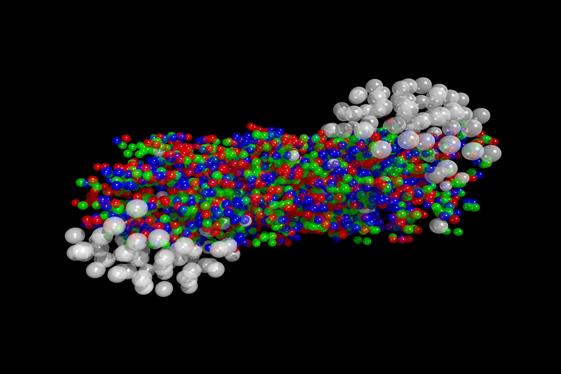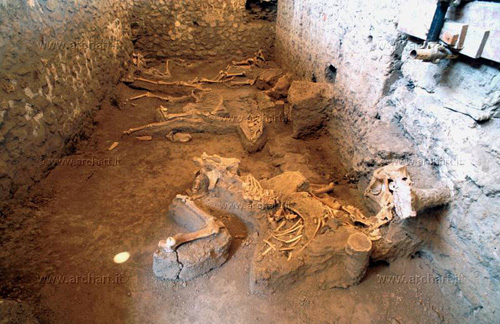|
Creato da: diegobaratono il 02/05/2008
NEW ARCHAEOLOGY, SCIENZA, ARCHEOLOGIA SPERIMENTALE, RICERCHE ARCHEOLOGICHE D'AVANGUARDIA, NEWS DAL MONDO, EGITTOLOGIA, EGYPTOLOGY, ARCHEOASTRONOMIA, PALEOGEOMETRIA, CRIPTOGEOMETRIA, CULTURAL GEOMETRY, GEOMETRIA CULTURALE, ARCHITETTURE SACRE
|
Area personale- Login
TagCerca in questo BlogMenuCitazioni nei Blog Amici: 8 Contatta l'autore
Chi può scrivere sul blog
Solo l'autore può pubblicare messaggi in questo Blog e tutti possono pubblicare commenti.
I messaggi e i commenti sono moderati dall'autore del blog, verranno verificati e pubblicati a sua discrezione. LINK DA CONSULTARE - LiriciGreci.org - Egittophilia - Egittologia.net - Pyramidales - WORLDTRUTH - Bibliotheca Alexandrina - Osservatorio virtuale - INAF-Osservatorio Astronomico Torino - Giza Plateau Mapping Project - AERA, Ancient Egypt Research Associates - Il Museo Egizio di Torino - Il Museo Egizio del Cairo - Ecco il Louvre - Ecco il British Museum - Musei Vaticani - Egyptians Gods - Previsioni meteo - Insolazione - California Institute of Technology - Astrocaltech - Geologicaltech - A tutto Caltech - Massachussetts Institute of Tecnology - Ecco gli Uffizi - Istituto Nazionale di Geofisica e Vulcanologia - Terremoti in tempo reale - MONITORAGGIO TERREMOTI REAL TIME - ESA (Agenzia Spaziale Europea) - NASA - LIETI CALICI - LIETI CALICI II - Science - ScienceNews - C.N.R. (Consiglio Nazionale delle Ricerche) - Moon Phases - Ordine Cisterciense - Abbazia di Casamari - Abbazia di Fossanova - Abbazia di Staffarda - Abbazia di Morimondo - Pompei - Ercolano - Amalfi - Tutto Darwin - Tutto Lyell - Ordine Templare - Politecnico di Torino - Università Amedeo Avogadro di Alessandria - Università di Oxford - Università di Cambridge - Isaac Newton - Albert Einstein - A tutta birra - A tutta birra II - Tutto Mendel - LIETI CALICI III - Abbazia di Tiglieto - Abbazia di Chiaravalle - The heritage - key - CERN European Organization for Nuclear Research - Science Daily - A caccia di meteore ... - World Digital Library - Library of Congress - Antikitera News - BIBLIOTECA DIGITALE ITALIANA - Il giornale di Galileo - Galileo Galilei - Enciclopedia Egittologica on line - Scienze cartografiche - El - Giza pyramids - Caravaggio - REUTERSNEWS - CNNNEWS - ANSANEWS - English Heritage - NATURE - ENCICLOPEDIA TRECCANI ONLINE - ENCICLOPEDIA BRITANNICA ONLINE - EGYPTIAN ARCHAEOLOGY - PRINCETON UNIVERSITY - NationalGeographicNews - RELIGIONI A CONFRONTO - USHEBTIS EGIPCIOS - Talking Pyramids - LIETI CALICI IV - Sito di ...vino - La Banca del Vino - MATHEMATICA ON LINE - ARKEOMOUNT - Egyptians Gods II - TESTI DELLE PIRAMIDI - DAVID ROBERTS - COLLEZIONI INTERNAZIONALI ON - LINE - LIETI CALICI V - GEOMETRIA SACRA - IPSE DIXIT - THE GRIFFITH INSTITUTE - ARCHIVIO SEGRETO VATICANO - ABBINAMENTI VINO CIBO |
Messaggi del 27/11/2010
Post n°617 pubblicato il 27 Novembre 2010 da diegobaratono
Da:"public.web.cern.ch" 26 Nov 2010 LHC experiments bring new insight into primordial universe Snapshot of two colliding lead ions just after impact (simulation). After less than three weeks of heavy-ion running, the three experiments studying lead ion collisions at the LHC have already brought new insight into matter as it would have existed in the very first instants of the Universe’s life. The ALICE experiment, which is optimised for the study of heavy ions, published two papers just a few days after the start of lead-ion running. Now, the first direct observation of a phenomenon known as jet quenching has been made by both the ATLAS and CMS collaborations. This result is reported in a paper from the ATLAS collaboration accepted for publication yesterday in the scientific journal Physical Review Letters. A CMS paper will follow shortly, and results from all of the experiments will be presented at a seminar on Thursday 2 December at CERN. Data taking with ions continues to 6 December. More information
Post n°616 pubblicato il 27 Novembre 2010 da diegobaratono
Da: "Antikitera.net" 26 Novembre 2010 ARCHEOLOGIA http://forums.thephins.com RITROVATA LA TIRO BIBLICA, ERA SOTT'ACQUA A 300 METRI DALLA COSTA Ritrovata la Città di Tiro, l'isola che all'epoca era a 300 metri al largo della costa della Terra di Canaan. Ma per la sua posizione strategica beneficiava della ricchezza dei traffici in tutto il mediterraneo. Tiro, nella Bibbia era stata descritta come una città - stato che si era schierata politicamente contro Israele, infatti si legge: Io sono contro di te, o Tiro, e farò venire contro di te molte nazioni, come il mare fa con le sue onde. Esse distruggeranno le mura di Tiro ed abbatterà le sue torri, io verrò a portar via le sue macerie e farò di lei una roccia nuda. In mezzo al mare, diventerà un luogo buono solo per pescare con le reti, così ho deciso, dice il Signore Dio. Lei diventerà preda per le nazioni, e tutti gli insediamenti sulla terraferma saranno devastati con la spada. Allora sapranno che io sono il Signore" La cosa è interessante perché se si legge attentamente questa descrizione... come poteva accadere una cosa del genere? Solo nel caso che Tito fosse stata una sorta di città fortificata su un'isola. Quindi dando un'occhiata alla Tiro attuale che cresce solo sulla terraferma, si nota come nelle sue acque più a sud ci siano le tracce di tracciati e costruzione che giacciono sotto il livello del mare e che erano congiunti con la terraferma a mezzo di un pontile che fungeva anche da fronte contro le onde proteggendo il porto della vecchia Tiro. L'utilizzo di Google Earth, ha permesso di confermare quest'ipotesi di studio. Lo spazio tra la terraferma e l'isola è stata riempita con limo attraverso i secoli, ma è anche del tutto probabile che le rovine di Tiro si estendano per un'estenzione molto più ampia di quello che si vede dalle foto satellitari. Adesso serve solo qualche archeologo subacqueo che sia disposto a riportare in luce questa storica città.
Post n°615 pubblicato il 27 Novembre 2010 da diegobaratono
|
||||||||||



